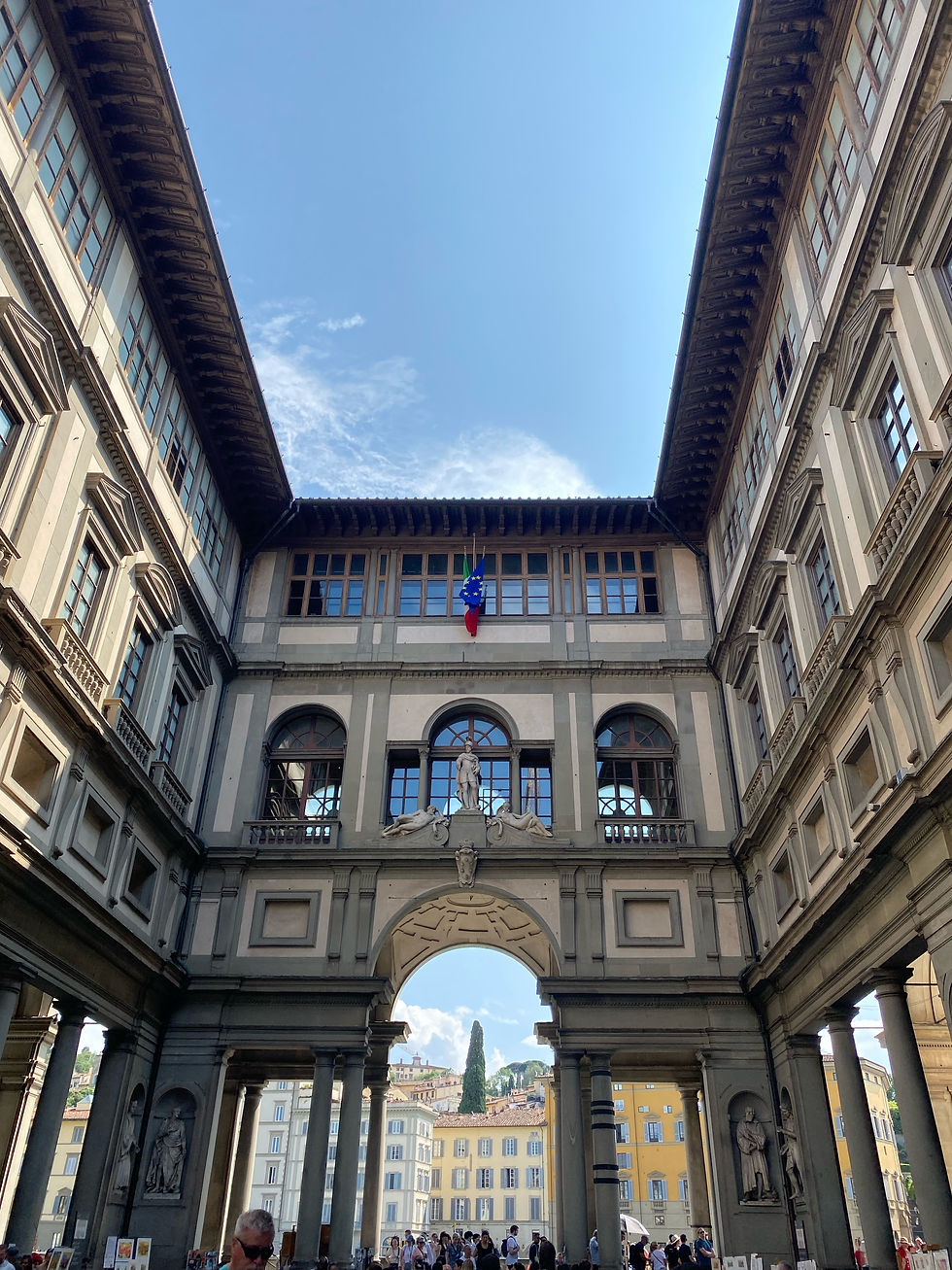A Toast to Beauty: The Architecture of Chianti's Wineries
- ldubreucq
- May 30, 2023
- 4 min read
Updated: May 31, 2023
By: Layla Dubreucq
In the heart of the Chianti region where vineyards carpet the land, the artistry of winemaking intertwines with architecture. Vintners search far and wide, above and below ground for the best locations to produce rich Italian wine. They seek land with enough space and ample sunlight for their vineyards, as if mother nature herself were their architect.
Winemaking is a form of art, and the location where it is produced is a part of the final masterpiece. Amidst the stone walls, not only wine but also olive oil can also be accommodated in these spaces. In Chianti, the perfect architectural design is needed in order for these fruits to flourish.

History of the Castello del Trebbio
Deep within the mesmerizing Chianti countryside stands the remarkable Castello del Trebbio, an architectural gem steeped in history. The majestic castle was constructed just before the 12th century when castles were transitioning from being built from wood to stone. Stone was desirable during construction due to its longevity and resilience, especially in a time of upheaval.
Robust stone became vital during construction, especially for the castle’s illustrious inhabitants, the Pazzi family. These nobles were an incredibly wealthy family of bankers, who sought after this castle for protection from enemies and conspiracies.
The Castello del Trebbio faithfully adheres to the traditional medieval Romanesque architectural style, exuding an aura of strength and supremacy. Its thick, imposing walls form the castle’s foundation, standing tall, withstanding centuries of weathering. Arched windows and doorways, an iconic feature of Romanesque design, are scattered throughout the entirety of the castle, casting ethereal rays of light into the courtyard. Towering and sturdy pillars are also seen throughout the property, used as support for the building, but also meant to represent the family’s strength and stability.
Today, the Castello del Trebbio stands not only as a testament to architectural ingenuity but also as a testament to the enduring spirit of Chianti's history. It serves as a captivating reminder of the region's past while offering visitors a glimpse into the 12th century.
Inside the Cellar

Moving inside the Pazzi’s former home, the castle has been transformed into a modern-day winery. As visitors step inside the castle's transformed interior, they are greeted by high ceilings adorned with rustic wooden beams, purposefully designed to support the weight of countless barrels of wine.
Preserving the castle's historical essence, the original stone flooring has been kept. The stone serves a crucial role in maintaining a cool environment within the castle which protects the delicate temperature of the wines.

Within the depths of the castle lies a hidden gem—the basement, which has proved to be the perfect sanctuary for storing and aging Chianti’s finest wines. Due to its low access to light, a result of the architectural design of the castle, it creates the ideal atmosphere for wine maturation.
Todd Bolton, an experienced wine tour guide of over 20 years, describes how the castle's root cellar has become an ideal space for wine storage. “The cellar was originally used to preserve ice and snow to keep food fresh, but today it is perfect to maintain the wine’s freshness,” Bolton said.
Barrels within the cellar

Within the Castello del Trebbio's winery, the choice of wooden barrels for wine storage holds a profound influence over the wine’s final flavor profiles. Most commonly, American, and French oak are used to make the wine barrels.
In the pursuit of crafting sweeter wines, vintners often utilize a technique called barrel toasting. Prior to filling the barrels with wine, the inside surface of the barrels is carefully charred. This process releases compounds of flavor and tannins from the oak, which results in a higher node of spice and vanilla in the wine. This type of barrel toasting is particularly common among Tuscan wines, especially those within the Chianti region.
From Grapes to Olives

Ascending from the castle's cellar, a journey through the Castello del Trebbio reveals not only its expertise in winemaking but also its capacity for producing exceptional olive oil. When moving through the castle’s stone stairs, visitors are greeted by a room perfectly designed to store liquid gold.
The room’s design, characterized by short, barred windows that filter light, creates an environment ideal for preserving the quality of olive oil. Federico Bianchi, one of the staff members of the winery discusses this process over lunch. “It’s important to store the oil away from light, if not, the oil will go bad much faster,” Bianchi said.

Due to the room's extensive space, it is able to store over 10 large pots of olive oil. The pots are specifically made out of terracotta, which works deeper to block light and heat from reaching the rich oil. This oil storage technique was directly derived from the ancient Greeks and Romans.
During the tour, Bolton delves further into the storage process of olive oil. “Once the oil has sat long enough in the pots, it is later redistributed into barrels in preparation for bottling,” Bolton said.
The architecture of Chianti's wineries, exemplified by the majestic Castello del Trebbio, embodies a harmonious blend of history, innovation, and the art of winemaking.
The castle's transformation into a modern-day winery showcases the seamless integration of old-world charm and state-of-the-art facilities. From the high ceilings with rustic wooden beams, preserving the authenticity of the past, to the strategic use of original stone flooring to maintain the ideal temperature for wine storage, every architectural element plays a vital role in wine production.
The Castello del Trebbio's enchanting interior and its basement, perfectly suited for wine aging, reveal the intricate relationship between design and flavor development. It is within these walls that the captivating fusion of aesthetics and winemaking expertise comes to life, inviting visitors to immerse themselves in a truly unforgettable experience where architecture and wine converge in perfect harmony.





















Comments